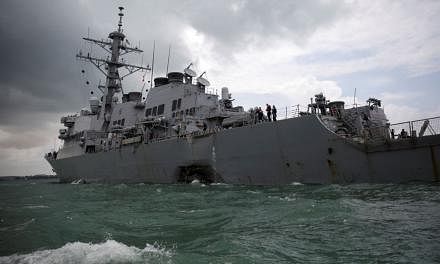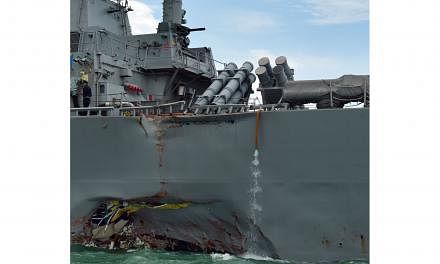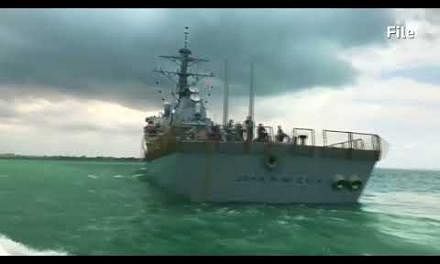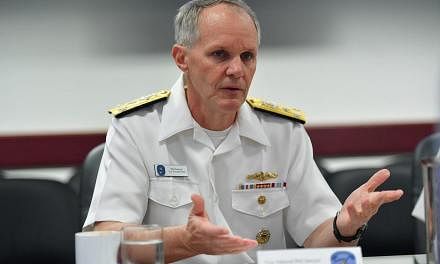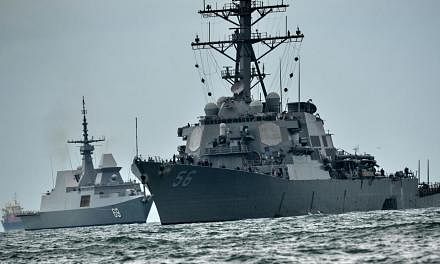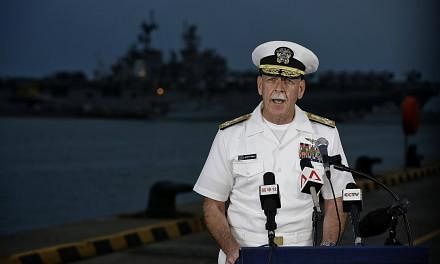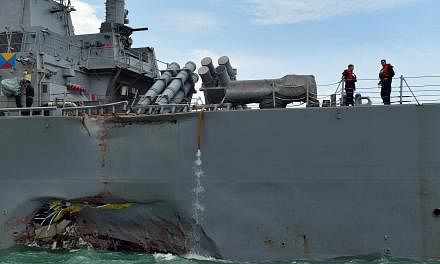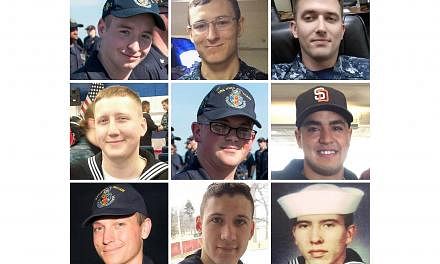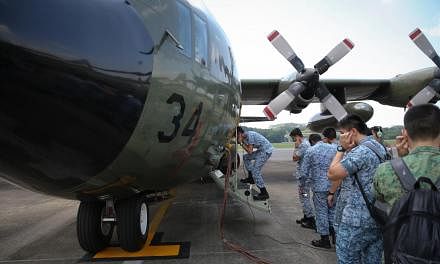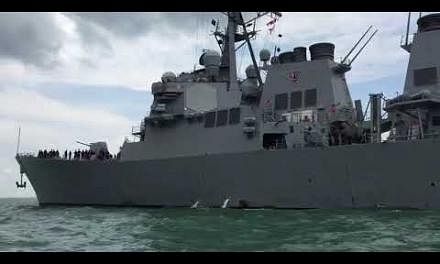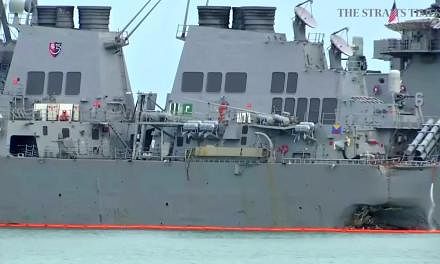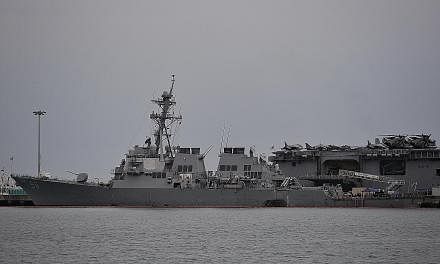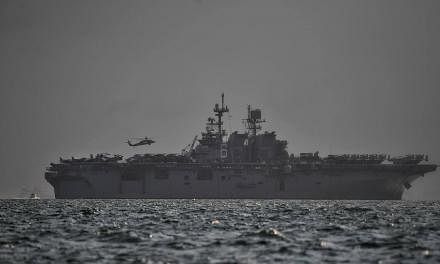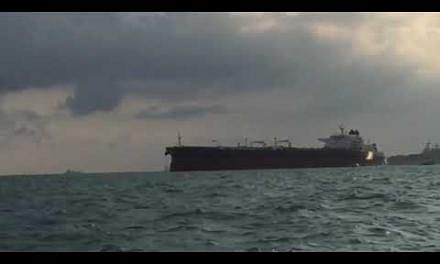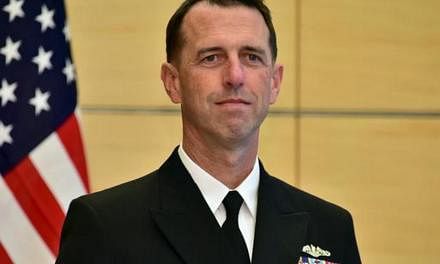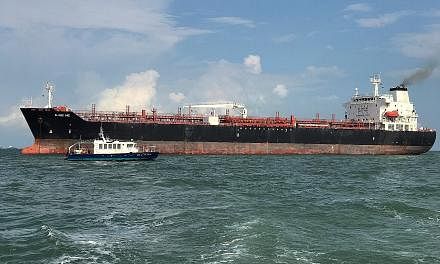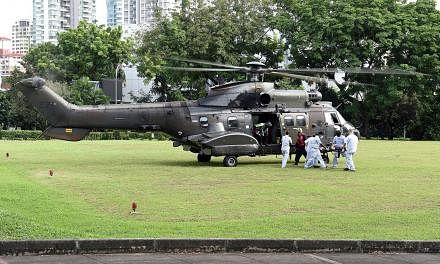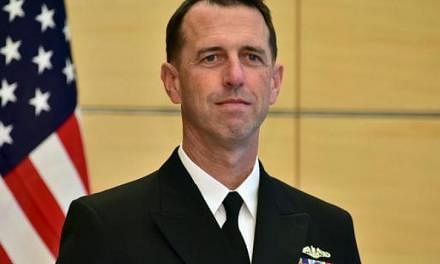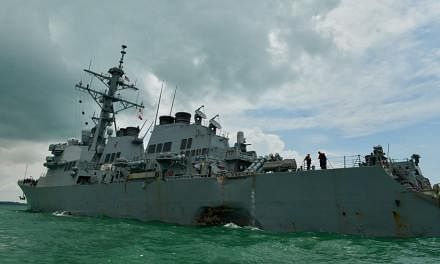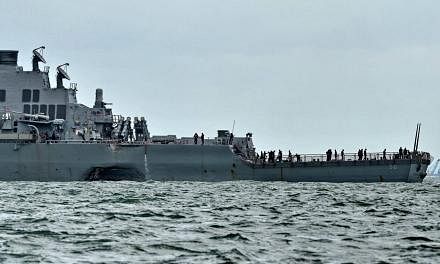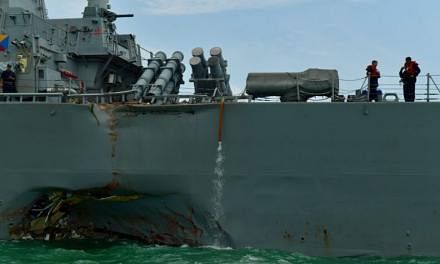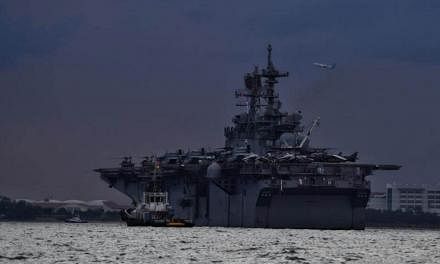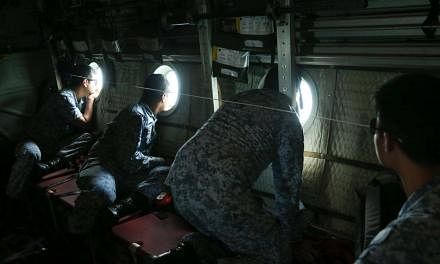SINGAPORE - The vessels involved in two separate fatal collisions in the Singapore Strait had been detected and identified by Singapore's network of maritime sensors, but were not designated as potential threats to security, said Defence Minister Ng Eng Hen on Monday (Oct 2).
This was rightly so, he told Parliament, adding that this meant the vessels did not require close monitoring by the Republic of Singapore Navy's (RSN) Maritime Security Task Force.
By the rules of navigation under the International Regulations for Preventing Collisions at Sea, the master and crew of the four vessels were responsible to guide their ships safely through, added Dr Ng.
"The various parties involved with the collision will now have to investigate what went wrong and what remedial actions to take if necessary," he said, noting that the Transport Safety Investigation Bureau is conducting an investigation and will make its findings public.
In the case of United States warship, USS John S. McCain, and Liberian-registered oil tanker Alnic MC, which collided on Aug 21, killing 10 sailors on the warship, both were detected in Singapore waters off Pedra Branca, noted Dr Ng.
The RSN vessel RSS Gallant, which was patrolling Singapore waters, had also established communications with the foreign warship as part of standard procedures, he added.
As for the case of dredger JBB De Rong 19 and tanker Kartika Segara, both were detected and identified prior to their collision on Sept 13, which took place within Singapore waters off Sisters' Island, said Dr Ng.
He was responding to Mr Vikram Nair (Sembawang GRC), who wanted an assessment of Singapore's maritime surveillance capabilities following these incidents.
Mr Vikram also asked about Singapore's ability to respond to scenarios where vessels in or entering Singapore waters might be used by terrorists.
Dr Ng pointed out that terrorists can target ships in Singapore waters, or attacks from the sea, as they did in the Mumbai attack in 2008, when militants armed with AK-47 assault rifles and hand grenades, arrived by sea.
He spoke of Singapore's comprehensive approach to ensure coordinated response when it comes to dealing with such terror threats. The Singapore Maritime Crisis Centre (SMCC), which brings together the RSN, the Police Coast Guard, the Singapore Civil Defence Force, the Immigration and Checkpoints Authority, the Maritime and Port Authority, and the Singapore Customs, was set up in 2011.
The centre maintains a comprehensive picture of the maritime situation, shares information between agencies, and coordinates responses to deal with potential threats, tapping technology to analyse information, detect suspicious patterns and cue relevant agencies to investigate and take action.
It had, in 2015, detected a potential Islamic State in Iraq and Syria (ISIS) sympathiser who was on board a tanker calling on Singapore, said Dr Ng, noting that the individual was barred from entering Singapore.
In another case in 2016, the centre got information about a hijacked tanker. This information was shared with the Indonesian authorities as the vessel was in their waters.
"This led to the ship's rescue, and, in that case, the hijack was not linked to any terror intent," said Dr Ng.
The Maritime Security Task Force feeds information - obtained from monitoring close to 1,000 ships passing through the Singapore Strait each day through a network of sensors - to the crisis centre.
Ms Joan Pereira (Tanjong Pagar GRC) had also asked whether there will be a review of the Vessel Traffic Information System (VTIS), which is used to communicate with vessels and monitor shipping traffic, to enhance safety and security following the two collisions.
Senior Minister of State for Transport Lam Pin Min said the Maritime and Port Authority of Singapore (MPA), which operates the system, carries out regular enhancements to it.
The VTIS integrates data from various sources, including radars, the Automatic Identification System, Closed Circuit TV system, Very High Frequency communications system and ship databases, to provide an accurate and comprehensive understanding of traffic, he said.
"With the capability to concurrently track more than 10,000 vessels, the VTIS enables MPA to provide timely information and advice to help vessels transit safely through the Singapore Strait, as well as manage traffic within our port waters, where there are some 1,000 vessels at any one time."
The system, which was installed in 2011, was upgraded early this year, Dr Lam added.
"Enhancing navigational safety is an important priority for MPA," he said, noting that MPA also seeks to improve the practice of good seamanship through conferences on navigational safety, and the establishment of the National Maritime Safety at Sea Council, among other things.


